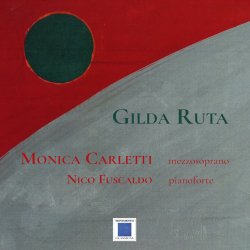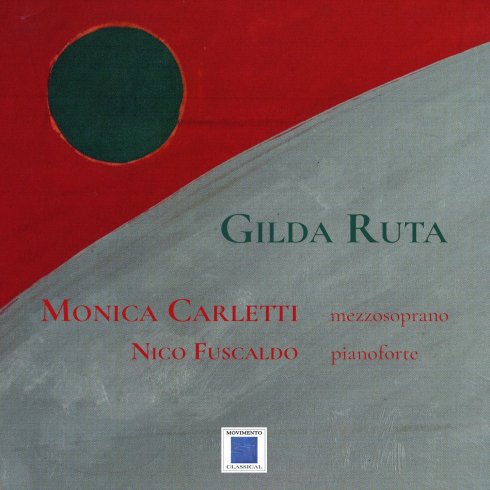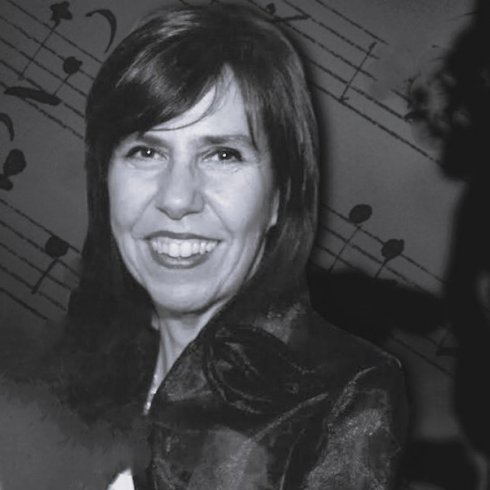

Gilda Ruta
Gilda Ruta
In the last few years, a new interest in the world and art of women composers has brought Gilda Ruta back into focus, emerging from the mist of a long-lasting oblivion. Her city, Naples, played a crucial role in rekindling attention of musicologists and audience to her life and work, notably through the release of her first documented biography .
Emelina Teresa Gilda Ruta (Naples, 1853 - New York, 1932) hailed from a musically affluent family with deep roots in Caserta and Naples, boasting around at least fifteen musicians spanning the 18th to the 20th centuries. Her father, Michele Ruta, a pianist, composer, musicologist, and patriot in the years of the Italian Risorgimento, contributed significantly to Neapolitan musical life as co-director of Naples’s Conservatory. Gilda's mother, Emelyn Sutton, an Englishwoman, had a background as an Opera singer. Gilda's upbringing unfolded therefore within this musical milieu, with her father recognizing her talents and allowing her to delve into the study of composition under Mercadante until the latter's passing in 1870.
Gilda, a concert pianist, commanded admiration in Italy for about two decades. Respected by musical authorities such as Martucci, Sgambati, Bottesini, she not only performed her compositions for Queen Margherita of Italy but also collaborated with a young Arturo Toscanini. Ricordi, the prominent music publisher, held her in high regard, and she excelled as a piano instructor for notable families like those of Francesco Crispi and Pasquale Stanislao Mancini. Gilda's public debut occurred at the age of sixteen, documented in an 1869 issue of the magazine Napoli Musicale. Despite a brief stint as a Countess, cut short by sudden widowhood, Gilda's letters reveal a dominant and seductive personality – energetic, extroverted, and resolute. Driven by a profound need for visibility, recognition, and admiration, she embodied the essence of protagonism.
The young musician captivated the Neapolitan audience with a rendition of Mendelssohn's G minor Concerto at the Mercadante Theatre in 1875. Swiftly becoming a celebrated pianist, she expanded her fame by performing in prestigious venues in Milan and Turin between 1884 and 1889, including three performances before Queen Margherita. Ricordi, the publisher, recognizing her talent, opened its doors, publishing numerous compositions, notably Romanze for voice and piano – a genre thriving in popularity at the time. Her concerts seamlessly integrated performances of her own compositions into her burgeoning piano career. From 1883 to 1889, she performed around fifty original pieces, achieving a form of consecration in Florence in 1890: this recognition materialized as a gold medal at the "Beatrice Exhibition” – an international showcase celebrating women's creativity – where she was honoured as the best composer.
The "Muse" of numerous intellectuals, Gilda may have amassed many reasons (probably both professional and sentimental) prompting her escape from a context she likely found challenging to reconcile. Thus, in 1894, she decisively cut ties with her native environment. A widow with two teenage children, she set sail for the United States, marking the conclusion of the initial chapter of her life and the commencement of the second, which unfolded, and ended, in New York. In her new life, Gilda lived an immense existential challenge, relying solely on her own work. She successfully surmounted this hurdle, swiftly earning appreciation. Presenting herself as an Italian countess (by marriage) and perhaps a pupil of Liszt (highly unlikely, but she never refuted such rumours), educated in Naples, recognized in Florence, and esteemed in Court circles, she skillfully crafted her public image.
Over the subsequent decades, Gilda, with determination, tenacity, and imagination, actively engaged in a modern, stimulating, and progressive social and cultural milieu. Through intense professional commitment, she sought answers to her restless aspirations for independence and female dignity: attributes, as the documents of the time show, evident since her initial days in America.
Gilda's reputation extended beyond her performances; her teaching in the United States left a lasting legacy. Numerous students, often young women and of Italian-American descent, distinguished themselves in the concert scene along the Atlantic coast during the 1910s and 1920s. They consistently showcased pieces by their esteemed teacher, proudly acknowledging her influence. Remarkably, Gilda's American school persisted for a very extended period, with one of her last piano and singing students, the Italian-American Sandra Pasimeni Antonini, passing away in 1999.
Struck by a cerebral hemorrhage in 1932, Gilda did not endure a long agony, nor any impaired survival: she passed away the following day, Wednesday 26 October 1932. Notably, this date aligned almost precisely with the day, 27 October, when she bid farewell to Naples thirty-eight years earlier. In the USA the news of her death was reported by the newspapers of various States and among the important obituaries of Time. Not a word, however, was spent in the Italian press to remember her: the newspapers of those days at the end of October 1932, even in Naples, were entirely absorbed in commemorating the tenth anniversary of the fascist "Marcia su Roma".
Gilda inhabited an era when an instrumentalist-composer still carried an aura of extraordinariness, often viewed with suspicion. Despite the evolving times that began to acknowledge the woman-composer with academic training, on par with her male counterparts, she navigated a landscape where such figures were scrutinized. Beyond her primary vocation as a pianist, she delved deeply into the realm of the "Romanza da salotto" or "Romanza da camera", which absorbed nearly half of her documented works. An exploration of the titles, dimensions, atmosphere, and literary language of her Romanze underscores her adherence to the informal principles that governed this type of composition in Italy. These included formal simplicity, brevity, a single thematic focus, tenderness, melancholy, melodic consistency, and robust harmonic support – a framework theorized by Gilda's father, Michele Ruta, in an 1855 article. The repertoire, presently known through a handful of composers, offers only a limited glimpse into the genre's cultural significance during that era. Indeed, throughout the Belle Époque, the Romanza enjoyed widespread favour and dissemination, particularly in domestic settings like salons, parlours, and living rooms. The allure of this music extended to the acquisition of scores, often characterized by their exquisite graphical presentation, providing a snapshot of the genre's cultural importance during that time .
Gilda demonstrated a keen awareness of the demands of her time and, likely influenced by publishers, paid meticulous attention to the vocal texture of her Romanze. This strategic approach aimed at ensuring broad market coverage, allowing her compositions to be performed across various male and female vocal ranges. Her consideration extended to the practicality of non-professional performers, often the protagonists in domestic settings. In response to this, Gilda, when necessary, even provided separate printed editions for different vocal registers. A notable trend in the world of the Romanza was the declaration on the front page of pieces for two vocal registers, accommodating both tenor or soprano, baritone or mezzo-soprano, and contralto or bass. Gilda embraced this practice, and some of her compositions allowed for flexibility in singing across different registers. For instance, "Povero amore!" could be performed by a mezzo-soprano, baritone, or even a tenor. Similarly, "Addio!" catered to mezzo-soprano, baritone, or bass voices. "Alle stelle", printed in two versions, accommodated mezzo-soprano or baritone as well as mezzo-soprano-alto or baritone, with a slight reduction in range, showcasing Gilda's adaptability. Furthermore, adhering to the prevalent custom of maximizing diffusion, Gilda opted for Italian lyrics, occasionally supplemented with anonymous translations, as in the case of a text attributed to Heine in "Alle stelle".
The Romanze contained in this recording span the years 1883 to 1890, with a concentration during Gilda's bustling and prolific Italian period, notably in 1884-1885. This period aligns with her peak creative and concert activity, much of which was built upon her own compositions.
"Brezza marina", dedicated to the American singer Emma Thursby, was apparently composed in New York and exists only in the autograph dated 14 June 1895, preserved in the New York Public Library. This piece is probably premiered on this occasion.
Giovanni Vigliar


MONICA CARLETTI
Teacher at the "Santa Cecilia" Conservatory in Rome, Monica Carletti graduated in singing with top marks after studying the violin. He collaborates with Rai with live performances on various radio programs such as MattinoTre, RadioTre Suite and La Barcaccia. She sang live with masters such as D. Oren, (Terme di Caracalla, concert broadcast worldwide), F. Leitner (Accademia Musicale Chigiana, Mozart's Requiem), A. Zedda (Teatro S. Carlo di Napoli, Elisabetta Regina d' Rossini's England), D. Renzetti (Cherubino in Le nozze di Figaro), M. Arena (Flora in La Traviata, at the Teatro S. Carlo in Naples), B. Bartoletti, (Teatro Carlo Felice in Genoa, Jenufa by L. Janacek directed by L.Cavani)..

